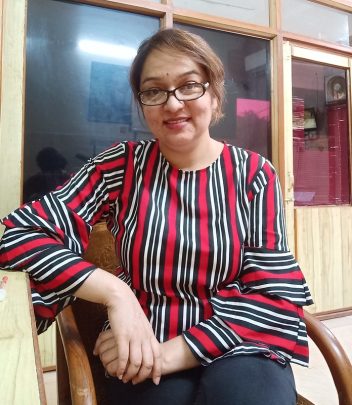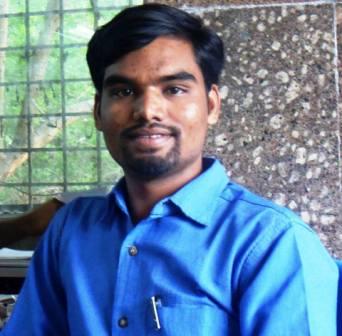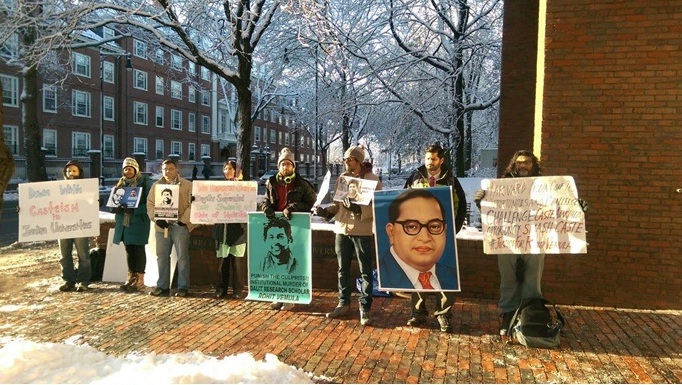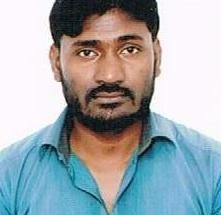Dr Amritpal Kaur
‘What becometh a woman best, and first of all? SILENCE. What second? SILENCE. What third? SILENCE. What fourth? SILENCE. Yea, if a man should aske me till Domes daie I would still crie Silence, Silence… ‘
– Thomas Wilson, The Arte of Rhetorique, 1560.
Women have long been expected to govern their tongue. Silence was reinforced on them by their subordinate status in the society and has been bolstered by all the androcentric religions. William Blackstone in his eighteenth century work ‘Commentaries on the Laws of England’ explains: “By marriage, the husband and wife are one person in law, that is, the very being or legal existence of the women is suspended during the marriage, or at least is incorporated and consolidated into that of the husband; under whose wing, protection and cover, she performs everything….”
Many such sets of laws have been applied almost entirely to women aiming specifically to mute their voices. Women could be punished and humiliated simply for talking too much or talking in public or in a tone not in consonance with the expected behaviour. This culture of silence is sinisterly backed up by religions so that the order can be kept male. The culture of silence plays its role as a part of the social institution called patriarchy. According to Dr. Ambedkar, “Law is not the only sanction that goes to sustain social institutions. Institutions are also sustained by other sanctions, of these religious and social sanctions are the most important.” The legal framework may be amended but it is most difficult to challenge the religious sanction and least expected to change. All the sacred texts/literature have been written by men and the sacralisation of female sexuality has been a part of almost all sacred legal codes. On the contrary, many women have revolted and tried to break their silence through words in many forms.
I have been an ardent poetry lover since childhood. Like most of the convent pass outs, I too have a die hard admiration for English poetry. A few days back when I had to take a couple of leaves from my work because of a severe muscular spasm, I decided to indulge in poetry and picked up ‘Collected Poems’ by Sister Mary Madeleva Wolff, whose poems were praised by the New York Times as having “melodic skill” when it was first published in 1947. She is fondly remembered as ‘the lady Abbess of nun poets’. This led to a random thought of comparing the writings of the women ordained in different religions. How they expressed this (monastic) silence living near their respective Gods who sanctified it in one way or the other, would be interesting to find out.
Ordination of women into organised religious institutions is not a recent phenomenon. Commitment to religious life has always been a choice for some women for a profound spiritual experience. Jainism was probably the first religion where women were ordained into the order along with men. This was followed successfully by the Buddhist order. Hinduism, however does not permit women to have a life outside the Grihastha while allowing its men to avail educational, political, economic and sexual opportunities through four stages permitted to them in their life span. The religion assigns four ashrams for men to follow – Brahmacharya, Grihastha, Vanaprastha and Sanyas, whereas women are included only in Grihastha ashram in order to fulfill the man’s sexual desires and procreating his legacy. We do find mention of many women philosophers and scholars in the Vedic times. Ghosha and Lopamudra were the Mantradrics (authors) of Rigvedic Samhita, Maitreyi (wife of Yajnavalkya), Gargi and Atreyi (studying Vedanta under Valmiki) were great philosophers.
The decision to enter a Christian monastery was often made for women rather than by them. Most often wealthy fathers sent daughters without marriage possibilities to the convent. Poor families would donate their daughters to the convent as it was cheaper to dower a daughter to a monastery than to a husband. Single, divorced, abused, widowed, older women who had very few choices in their social and family life were offered an alternate way of life through monasteries. There is a long history of offering of girls to the Gods in Hindu religion as the servants of Gods under the devadasi system. Young girls from the lower strata of Hindu society are offered to the temples where they lead a life of a sexual slave and absolute exclusion at the merciless hands of the ingenious Bhudevas. The custom of devdasi was/is nothing but a sanctified debauchery, pious obscenity and divine immortality.
The Brahmins also known as the Bhudevas or the Gods on earth have enjoyed an exclusive privilege to deflower the women on primae noctis. The traveller Ludovico di Varthema who came to India in the middle of the 16th century and visited Malabar says:
“It is proper and at the same time a pleasant thing to know who these Brahmins are. You must know that they are the chief persons of faith, as priests are among us. And when the king takes a wife he selects the most worthy and the most honoured of these Brahmins and makes him sleep the first night with his wife, in order that he may deflower her. Do not imagine that the Brahmin goes willingly to perform this operation. The king is obliged to pay him four hundred to five hundred ducats. The king only and no other person in Calicut adopts this practice.” ( VOLUME 1, p. 141 )
Hamilton in his A new account of the East Indies says:
“When the Samorin marries, he must not cohabit with his bride till the Nambourie (Nambudri) or chief priest, has enjoyed her, and if he pleases he may have three nights of her company, because the first fruits of her nuptials must be a holy oblation to the God she worships and some of the nobles are so complacent as to allow the clergy the same tribute; but the common people cannot have that compliment paid to them, but are forced to supply the priests places themselves.” (VOLUME 1, p. 308)
All the religious orders are male centric where women subjected to the rule of men had a very little say and had no control over the revenues. They had no representations in the hierarchy of the religious order nor could they determine any regulations regarding the monasteries. Perhaps no regulations were more ensuing than those in relation to enclosure as most of the monastics believe that separation from the world helped to create an ideal spiritual space for devotion to God. The enclosure for men wasn’t absolute but it was considered essential for women and was imposed in a far more rigid way for them than men.
While keeping them securely behind the walls does safeguard them against the possibility of being carried off, raped or attacked, how women were viewed by the men also played a very crucial role in the emphasizing on strict enclosure. It is not difficult to assess how men viewed the presence of women in their religious orders because their thoughts would be consonant with the views of their Gods on women. Historian Jane Tibbetts Schulenburg notes: “As brides of Christ they were to be concealed from the world.” The rigidity of the enclosure rules did provide safety from the outer world but women are also regarded as the descendants of Eve as temptations for men, prone to moral weakness and sin trapping men in their mystiques of femininity. All religions hold female sexuality as devilish and the reason for the moral turpitude of men.
In solitary confinements of religious orders it must have been very difficult to find ways of expression except through prayers and hymns. Alex Mar, in ‘The Secret Life of Nuns’ tries to find answers to why would a woman make the very specific choice to marry God? Why would she choose to live with many brides, very little privacy, limited resources and to set aside every personal need and ambition in favour of the needs of others? Likewise, Shannon Reed in ‘The Cloister and The Cradle’ tries to explore the tradition of nuns who cared for the wooden baby Jesuses in lieu of children of their own and in devotion to their lord. On the other hand Sister Jesme in ‘Amen’ and Sister Lucy in her autobiography in Malayalam expose the ground realities of monasteries like sexual exploitation of nuns by the priests, homosexual relations, class/caste distinction, difference observed between the comforts of nuns and priests and the chauvinist attitude of the priests.
Lots of literature is available today about ordained women who chose to leave their families, homes, and society in order to escape patriarchal oppression or to achieve spiritual experience. Sallie Tisdale in ‘Women of the Way’, Martine Batchelor in ‘Women on the Buddhist Path’, Wendy Garling in ‘Stars at Dawn’ and ‘Woman who raised the Buddha’, presents many stories and experiences of Buddhist women from a variety of Buddhist traditions. Books by Rita M. Gross question the gender differences being practised inside the Buddhist Sangha. But poems written by Buddhist nuns, Christian nuns and female bhakti saints not only provide us with the expressions of their lived experiences but also give an account of the basic tenets of their religious teachers and how the ways to achieve them differ substantially on the philosophical and practical grounds.
Many women boycotted the patriarchal norms and customs of society to embrace the bhakti movement and claim their place in the androcentric religious movement. They expressed themselves in beautiful verses challenging the draconian laws of Manu. Men expect outward seemliness and meticulous display of devotion to them and their families, unquestionable participation of their women in religious functions but do not permit them to follow a religious path independent of their husbands. Considered to be impure and sinful, many women turned to God for close companionship, as a guide and an idealized lover or husband. The tenets of religion which order them to stay within patriarchal ideology as dutiful wives, devoted mothers and above all as muses were shaken with the presence of another man (illegitimate) in the form of a God.
Religion provided them with solace, freedom and gave them courage to speak against oppression. Women sought freedom to worship but domesticity and devotion was not allowed to women as a norm. Their expressions cover the spectrum of what it means to be a woman in a religiously patriarchal society. They submit their love, lust and longings to God and at the same time evoking their Gods to come and deliver them from their tedious worldly existence.
The verses by female bhakti poets were overshadowed by their male counterparts although their literary efficacy was no less than their counterparts. The same fate was also suffered by the ambitious poetry of Sister Wolff and Sister Mary Beretta Quinn when it was obscured by poetic priests like Gerard Manley Hopkins and Robert Southwell. These women were not the first literary nuns (Christian), Sor Juana Inés de la Cruz, a 17th century Mexican nun is famous for her iconic verses. The poems of these women religious poets despite their orthodox piety are devotional and deft, narrating their longing for God which is spoken of metaphorically as romantic love.
Orthodoxy, extremism in relation to suppression of emotions particularly sexual, concept of sin and guilt forever keeping one fearful, overdependency on the God for salvation, unrealistic expectations from the God as the saviour of one’s and world’s sufferings, private confessions, release from self doubt, surrender to the circumstances as the will of the God and many such expressions are very much compatible with the teachings of the religion itself. There is no emotion of rational self reliance which comes on the account of self help.
When you read Therigatha, the oldest of women’s writings by the elder Buddhist nuns, one finds that they achieved the status of rational beings by their own efforts by learning to reject the mystiques of domesticity and femininity but also challenged the patriarchal order of the society by defeating well read men in arguments. Miri Rubin in her scholarly book ‘Mother of God : A history of Virgin Mary’, projects Mary as a chaste, modest, chosen, virgin mother of the God who has served as an inspiration to countless artists, writers and believers. But when we read about Mahapajapati Gotami, the foster mother of the Buddha, we come to realise her personality not only as a mother, but also as an assertive woman who stands to challenge the decision of Buddha of not allowing women ordination into his Sangha. We see a woman who through her sheer grit and determination refuses to bow down and in due course of time not only wins Buddha’s trust but also is considered to be a pioneering personality who maintained the bhikkhuni Sangha with commitment and morality. Even Buddha had to break his rule where a bhikkhu is not allowed to visit a sick bhikkhuni, when Mahapajapati Gotami was at her death bed, out of reverence to the senior most nun.
The Buddhist nuns could achieve what nuns belonging to other sects couldn’t. They could achieve salvation from their sufferings on the account of their own mental stirring without the involvement of an authoritative God. There is no religious teacher except Buddha who sowed the seeds of a rational culture of mind in men and women alike. It was the first time that women could lead an alternate way of life, a religious life where they could think, meditate, ponder upon, argue and be joyous in the attainment of the truth of suffering. Sangha as a democratic institution broke the hierarchical social structure and the bhikkhunis could relate to one another overcoming the class/class boundaries. While in other religious women poetry the most common expression the reader comes across is that of an absolute surrender to the God’s will by suppression of emotions, but the most common expression of the Theris is the achievement of control over their minds after which they feel free from the cycle of rebirth in consonance with the basic principles of Buddha, the law of impermanence and the no soul doctrine. If there is dukkha in the world then it is the responsibility of the human to correct his dukkha not God’s duty. And the solution to individual dukkha can only be found in the collective dukkha of the world.
Reading the poems of these religious women was an enthralling experience for me while it also made me question whether it is possible to bring a cultural change required for women liberation without questioning the authority of God (male) in silencing the voices of women in one way or the other? I leave the answer to the readers but we must not forget that Dr. Ambedkar’s idea of women liberation was an intrinsic and inseparable part of his ideology of socio-cultural transformation. I would like to appreciate the efforts of these religious women who showed the grit to challenge the oppressive system in whatever limited scopes they had.
~
References
- The Art of Rhetoric by Thomas Wilson, Ed. Peter E. Medine, Benediction Classics 2009.
- The Oxford Edition of Blackstone’s : Commentaries on Laws of England, Oxford 2016
- BAWS – ‘Who were the Shudras?’ and ‘The Untouchables – Who were they and why they became Untouchables?’, Volume 7
- Collected Poems – by Sister Mary Madeleva Wolff, New York, Macmillan, 1947
- The Heroics of Virginity : Brides of Christ and Sacrificial Mutilation, by Jane Tibbetts Schulenburg -Syracuse University press, NY 1986
- The Secret Life of Nuns, Alex Mar, Oxford American, Aug 2013
- The Cloister and the Cradle, Shannon Reed, Vela, Oct 2014
- Amen – the Autobiography of a Nun, Jesmi (Sister) Penguin Books India 2009
- Women Under Primitive Buddhism – Laywomen and Almswomen by Isaline Blew Horner, Motilal Banarsidass 2007
- Women of the Way – discovering 2500 years of Buddhist Wisdom by Sallie Tisdale, Harper Collins 2009
- Women on the Buddhist Path by Martine Batchelor, Thorsons 2002
- Stars at Dawn: Forgotten stories of Women in Buddha’s Life by Wendy Garling, Shambhala publications 2016
- Women who raised the Buddha by Wendy Garling, Shambhala publications 2021
- For the Love of God – Women Poet Saints of Bhakti Movement by Sandhya Mulchandani, Penguin Viking 2019
- Silence: A Social History of One of the Least Understood Elements of Our Lives by Jane Brox, Harper Collins, 2019
~~~
Dr Amritpal Kaur is an Oral and Dental Surgeon (BDS) from Jalandhar, Punjab. She has been a private practitioner for the last 13 years. She is a writer (on Ambedkarism, Buddhism and Feminism), a Social Thinker and a founding member of the National Council of Women Leaders.










